Artificial ruby: what is it and how to distinguish it from natural stone?
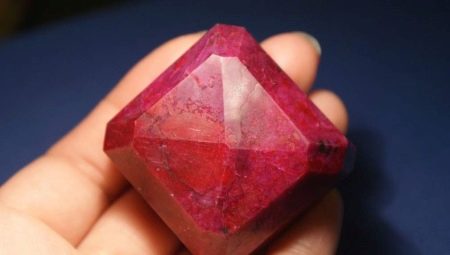
Ruby is the king of gems and the lord of magic, a stone of wealth and power. The symbol of love, beauty, strength and royalty, health and love of life is a mineral of mystics and wizards, possessing powerful strength and not tolerating lies.

Description
Ruby is the leader in the range of especially valuable stones. It is a mineral of exceptional qualities:
- transparent;
- smooth;
- bright;
- lasting;
- heavy.
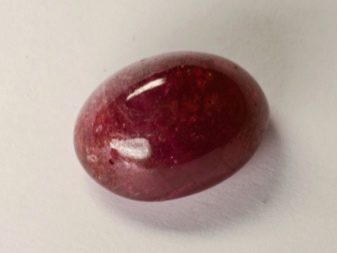
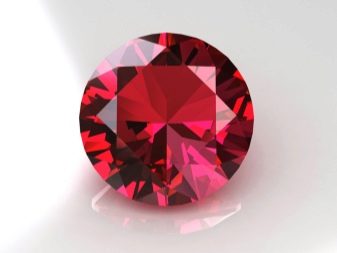
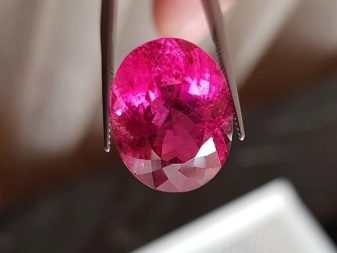

In a possible spectrum of colors characteristic of it, there is a fiery raspberry color, red with brownish, yellowish or pinkish shades. The most valuable is a gem with blue or violet hues, which is called the color of "pigeon blood".

Also known are the so-called "star" rubies (sapphires), which can be of almost any color. Typically located in the center of a finished gem, the impressive six-pointed star looks unusual and mesmerizing.
The color and properties of rubies are determined by the natural conditions of occurrence and depend on the place of their birth.
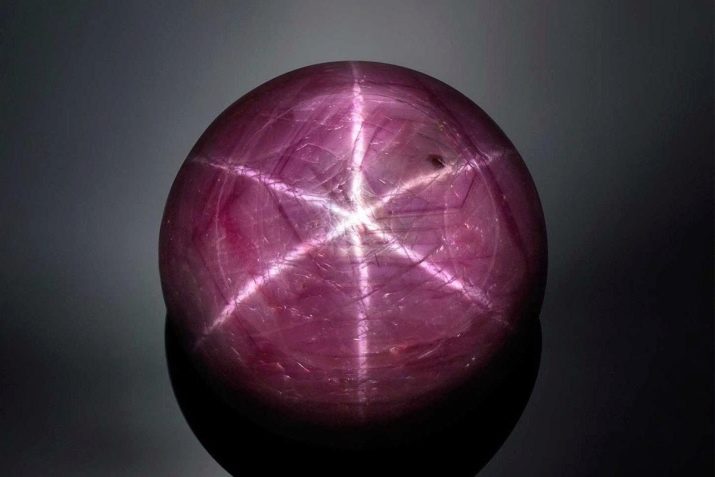
Rubies are classified according to shades of red:
- intense, bright;
- typical;
- average;
- saturated;
- light.
Due to its natural properties, ruby is an expensive gem; some of its specimens reach a price of several tens of thousands of dollars. The most valuable 8.62-carat ruby is in a Bulgari ring purchased for £ 3.6 million by London jeweler L. Graff. The "Black Prince" ruby weighing 170 carats is called truly legendary. It was first mentioned in the 14th century as a decoration of the British royal court.
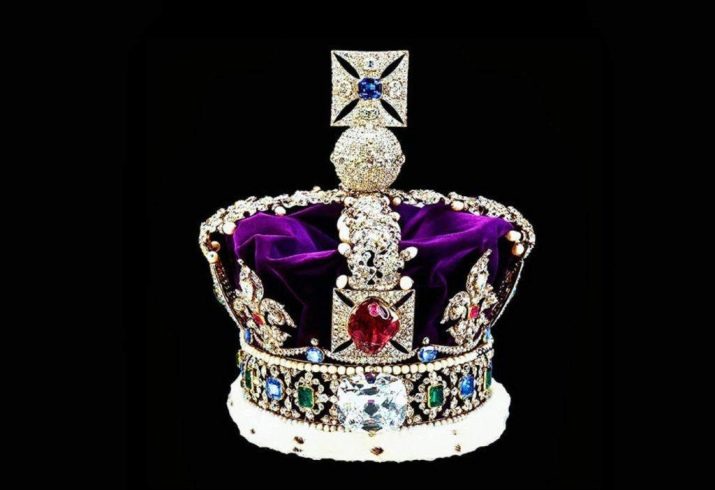
The mineral is a type of corundum with the chemical formula AI2O3. The difference in color is determined solely by the admixture of chromium compounds. In terms of hardness, corundums are second only to diamonds (9 on the Mohs scale). When illuminated, they emit an amazing shine and wonderfully shimmer. Pure, transparent minerals are more commonly used in jewelry.
Less often, rubies of an opaque type with asterism (impurities form rays) or single-beam ("cat's eye") are processed.
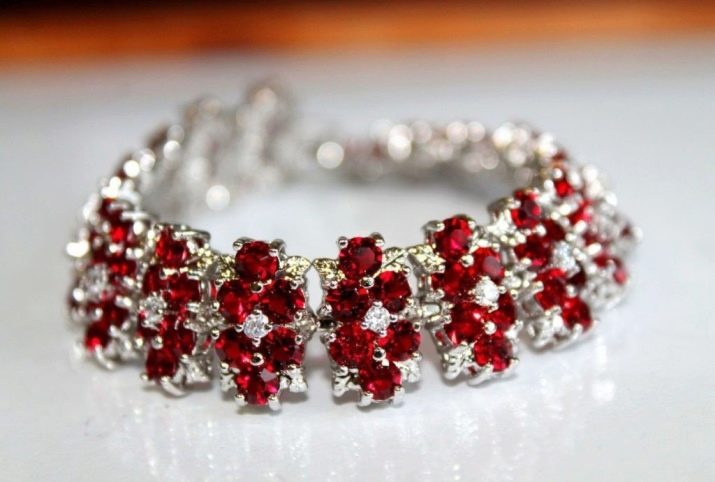
In gemology, minerals are distinguished:
- natural;
- synthetic;
- artificial.
At the same time, the latter, being complete analogs of natural stones, are grown in special devices. An artificial mineral is, as a rule, an imitation of a natural mineral with a different chemical composition and physical properties, a kind of resemblance that looks like a stone given by nature.
The color of natural and synthetic gems is determined by the amount of chromium ions. Without it, the stone would be colorless corundum. Ferrous additives add brightness to the mineral.
They have identical physical properties. Synthetic ruby, like its natural counterpart, leaves scratches on topaz, quartz, which is characteristic only of diamonds.
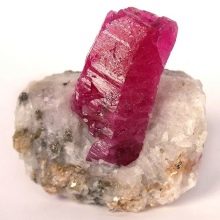
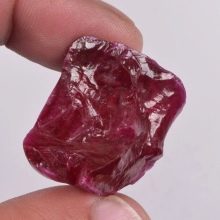
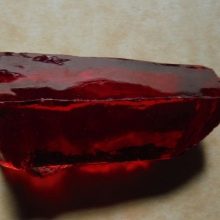
The mineral is grown both in crystals and in "bulks" (cylinders with a pointed end). The synthetic product is of high quality, but it can often contain bubbles and inclusions. Expert gemologists distinguish synthetics from natural minerals using a special device, observing curved growth lines. Natural stone has straight growth lines. In nature, ruby has different origins, but is more common in placers.
In fact, a synthetic (hydrothermal) mineral is the same ruby that is formed in laboratories at high temperatures. Growing technologies have been developed so much that it is quite difficult to distinguish analogs from natural stones, but they are much cheaper. The main feature of synthetic minerals is their impeccability. "Baking" of minerals in laboratory installations at elevated temperatures, made from a mixture of chromium, iron and corundum, contributes to their defect-free formation.
Natural stones that grow in far from ideal conditions, as a rule, have certain flaws.
Despite being identical, synthetic minerals (nanorubins) are easier to cut and cut. They are easier to process because they have a more regular and uniform structure, which contributes to the formation of bright and shiny edges.
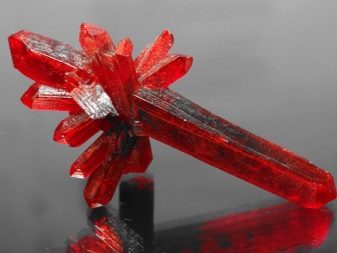

How is a synthetic ruby obtained?
For the first time, M. Gooden managed to get rubies back in 1837. At about the same time, reconstructions of rubies (Siamese) in the form of fused pieces of natural crystals up to 10 carats in size came into the trade. And although such products, strictly speaking, were not synthetics, the interest in them on the market decreased somewhat.
The first synthetic minerals were grown by the Frenchman O. Verneuil in 1982 by synthesizing crystalline corundum from alumina. The method was immediately put on an industrial basis and soon the production covered the whole of Europe and other continents. A real prospect has appeared to synthesize other minerals in a similar way.
Of the modern methods of obtaining high-quality synthetic stones, several are known.
- Verneuil's method... Powdered aluminum trioxide is mixed with chromium. The mixture is then melted in small portions on a burner. Further, on a ceramic lining, cylindrical single crystals (boules) with a diameter of 2 and a length of up to 30 cm are formed.

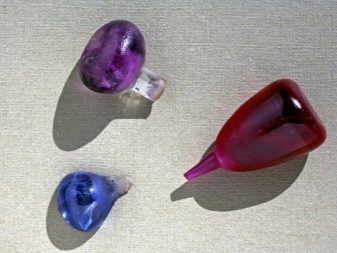
- Czochralski method - production of high quality mineral. Single crystals are obtained by smoothly pulling crystals upward from the surface of a significant amount of the initial melt.
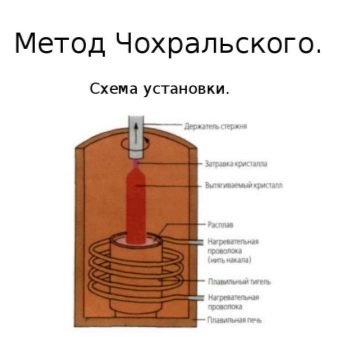
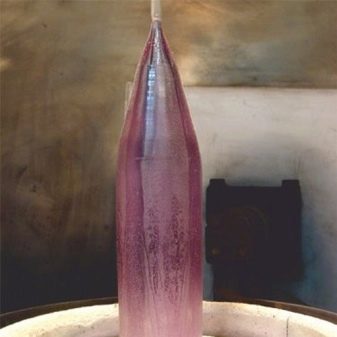
- Zone melting. One type of crystallization in which the starting material is pulled along a heating element in a molybdenum container.Due to this, crystals are formed in parts during the slow cooling of the melt. The grown crystal is formed in a lamellar form.
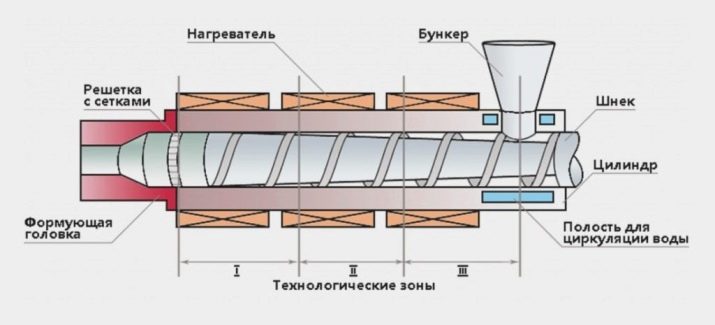
- Skew melting method... The material melts and crystallizes within its cold zones. Heating takes place using a high-frequency energy source. Columnar crystals are formed on cooling.
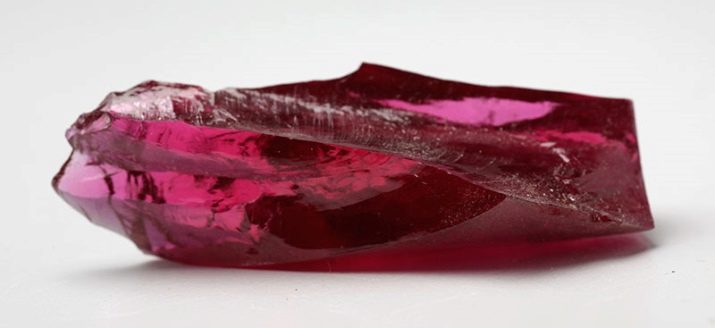
- Hydrothermal synthesis method. The mineral crystallization process is carried out in solutions of low-melting compounds (lead, boron and other elements).
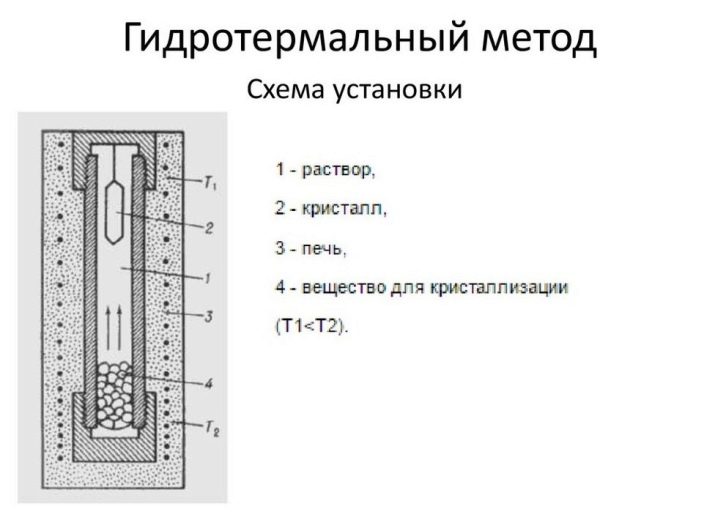
Properties
One of the oldest Indian legends says that the ruby was washed with the demonic blood of Vala, a glass with which the sun god Surya accidentally dropped into the waters of Bhakarta. So on the shores of these mysterious waters, ruby stars emitting their unique light appeared.
Minerals of different colors are found in Burma, Afghanistan, Sri Lanka, Nepal, Tibet. Some rubies are clearly similar in color to blood, others - to pomegranate seeds. Qualitatively the best minerals are uniform in color and emit a mysterious glow from the center of the stone.
Ruby is a symbol of power. By strengthening the socio-political rating of the owner, the mineral helps to increase his authority. Ruby is a symbol of love, helping and stimulating in people the ability to empathy, sacrifice, altruism, bringing harmony and prosperity to society.
Traditionally, it is given to people from whom reciprocity is passionately expected.

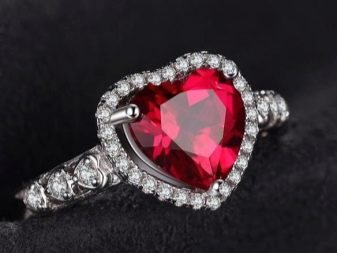
It is believed to change color as dangerous situations approach. This is a wonderful talisman against damage, evil eye and enemy intrigues. His magical qualities contribute to the strengthening of character traits in a person. However, the mineral "prefers" honest and strong people. The magic power of the stone is used by magicians and sorcerers.
The healing properties of ruby have been used since ancient times. According to lithotherapists, the mineral is useful in healing:
- diseases of the digestive tract;
- spine;
- ENT diseases;
- paralysis;
- blood diseases;
- hypertension.
The stone is able to strengthen the immune system, eliminate insomnia and depression, and improve metabolism. The daily infusion of the stone in water stimulates the processes of regeneration of the skin, body cells, normalizes the patient's condition with colds, relieves the body of toxins.
The stone is considered feminine because it treats gynecological diseases.

Ruby symbolizes the element of Fire, perfectly combined with the zodiacal symbols of Leo, Aries and Sagittarius. Does not combine with signs of the water elements (Cancer and Pisces). However, Scorpio is an exception, as the fiery Mars patronizes him. It should not be worn by Taurus and Virgos. For Capricorns, this is a neutral symbol.
Esotericists believe that the ruby talisman protects natural disasters, is able to protect the home from fires. Wearing it is associated with good luck in work and in financial activities.
The strong energy of the mineral stimulates a person's desire to learn new and unknown things, expanding the horizons of the possible. The talisman is especially useful for creative people working in the field of intellectual labor, people of science and art.
A dreaming ruby prophesies good luck and prosperity in the future.
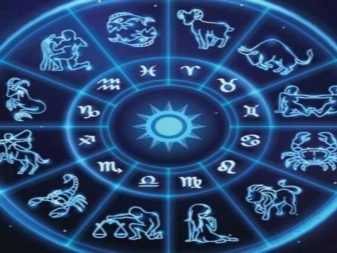
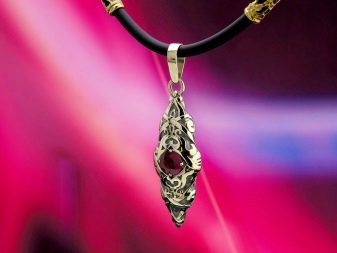
Similar minerals
In ancient times, all red stones were called rubies. However, most of them turned out to be either excellent spinels or grenades and tourmalines. Natural ruby is rarely found in nature. The trade nomenclatures of minerals still often contain the term "ruby", as a rule, with extensions such as "Ceylon", "Arizona" and others. However, these names often hide garnet, topaz, spinel or fluorite. This “replacement” of names is used to significantly increase the level of demand for the corresponding product.
Red spinel, which is often found in the same deposits, strongly resembles the famous Burmese rubies.The color of the spinel is also determined by chromium impurities, but its shade is different - brick color. A significant difference from ruby lies in the absence of dichroism (dependence of color on the direction of light) - in rubies this quality is pronounced. And also in terms of refractive index (1.72 versus 1.76 for ruby) and the quality of inclusions.
In addition, spinel has a characteristic luminescence spectrum, consisting of a number of light bands with two lines that stand out in their intensity in the center of the spectrum. In ruby, the spectrum includes only two bands, merging into one band in spectroscopes.
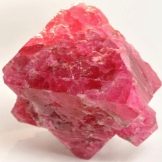



It is also easy to mistake almandine for ruby, which also differs from ruby in its refractive index (checked using a sodium lamp). Red garnet has a specific absorption spectrum structure with three stripes in the yellow, green and blue regions. Topaz is rich, pinkish in color, often mistaken for pale Ceylon corundum. In fact, this is a sapphire, which differs from rubies in refractive index.
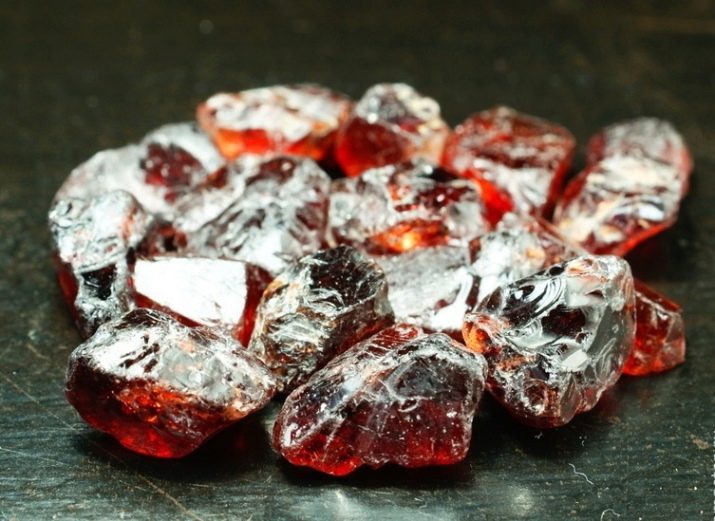
How is it different from natural stone?
Various materials are used in jewelry today:
- real minerals;
- imitations for natural stones (fake), differing from them in composition and properties;
- synthetic minerals, which are almost complete analogs of the real ones.
You can check the mineral for authenticity both at home and visually in the process of buying a stone.
- You can determine the naturalness of a mineral using a glass of water by dropping a stone into it. If the reddish radiation emanating from the mineral is clearly noticeable, then this is a real ruby.
- Under ordinary lighting, the natural mineral has a special burgundy color on the sunny side, and on the other side it is dull-pale.
- The authenticity of the mineral can be recognized with the help of cow's milk. If you put a real mineral in a small transparent container, the milk will take on a pinkish tint. Natural stone emits intense light.
- Will help to find out the true origin of the mineral ultraviolet. Synthetic specimens differ from natural ones in that when translucent with rays, they retain a red glow, and in natural ones, a bright orange appears.
- It is possible to distinguish a mineral from an imitation by the quality of the bubble inclusions. When counterfeited, such inclusions are empty, white, and in natural specimens they are filled with reddish gas.
- Unlike natural, on the surface of an artificial mineral, scratches are straight and glossy, and on a natural one - distorted, zigzag.
- Ruby heats up extremely slowly and if you apply it to the body (on the eyelid) and it heats up after a few minutes, then it is synthetic or fake.
- Run the mineral over the glass, and if a scratch remains on it, then it is a natural stone.
- A fake alloy of a significantly lighter weight of a heavy synthetic mineral.
- If the cost of the crystal is extremely low, then most likely you have a non-natural mineral in front of you.
It is important to remember that a synthetic ruby, especially one made in the Geneva technique, is very good. But he will not replace a real, natural jewel.
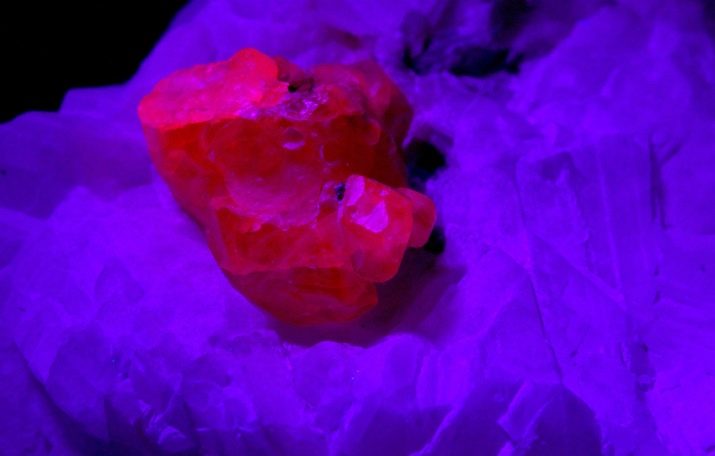
You will learn more about the artificial ruby in the following video.








